
When it comes to providing a director or client with a live feed out of the camera I previously either rented a system from my local rental house or just provided the client with a hard-wired connection straight from my camera. For obvious reasons, a wireless system is a lot more practical in most scenarios.
Having a live feed with a minimal delay coming from the camera adds an enormous amount of value to a shoot. In my opinion, it allows for greater collaboration, a more relaxed set with more people being able to see what’s going on, it allows for a closer director/DOP relationship. At the end of the day, it also lessens the chance of possible problems in the edit suite. The more eyes on the image when it is being captured, the less chance of mistakes.
A few months ago I had a number of TVC freelance DOP gigs in Adelaide that required a monitor for my director. I also landed a job on a series directing Australia by Design, so I thought it was time to bite the bullet and find a wireless directors monitor system for myself. Not only could I use this when I was directing myself, but I could also give it to clients and directors when I’m shooting.
If you can’t afford a high-end system – go for it
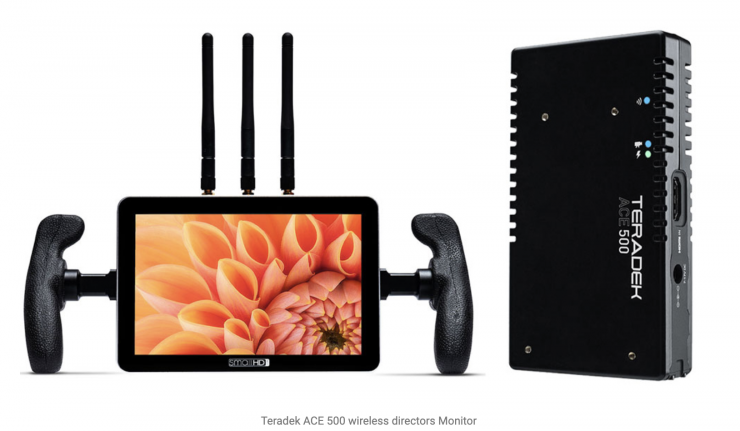
I decided that for the time being, I was going to lean on the more budget-friendly side instead of shelling out $3-$4k (AUD) for a high-end purpose-made transmitter and receiver system such as a Teradek.
The reason for this was a mix of the cost and the fact that it was happening around the Christmas holiday time. As I had a few quiet weeks with not much work I found the time to research and build a DIY system. It’s important to note that if you have the budget to buy a purpose-built solution then go for it. The reliability, build quality, and range of the signal is why you pay the money and this will be hard to match on a DIY system.
What I wanted the DIY set up to achieve
When setting out to build the unit, there were a few key features I needed to achieve:
- I didn’t want to be swapping batteries every hour or so. Ideally, I wanted to use one or two batteries for a full day of shooting
- Minimal use of cables. I like neat!
- I shoot outdoors a lot so I wanted a good quality monitor that I could see under the bright Australian sun.
- I wanted to use as much equipment / hardware that I already own to keep the build costs down.
There are multiple ways of building this type of rig. The important part is to do enough research so that you can build a system that suits you and how you plan to use the kit. Once I decided what was important for my particular needs it made the initial research easier.
Wireless transmitter/receiver research
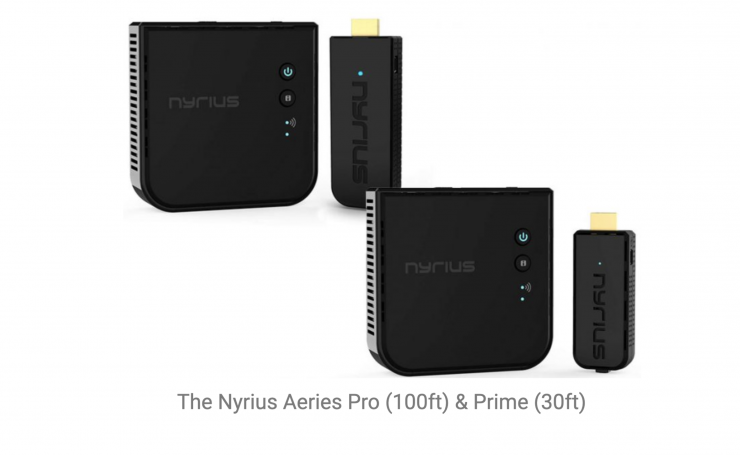
After a bit of Googling and YouTube searching, I found the Nyrius transmitter/receiver. This plugs into the HDMI out port on your camera and transmits an HD picture to a receiver up to 100ft away. The receiver then plugs into your monitors HDMI-IN, and just like that, you have a wireless HD live picture all from USB 5v power. It sounded simple in theory.
I decided that this would be the solution I’d try out. I had a look at Amazon and saw the Nyrius for sale for $150 USD. I’d seen it advertised on the Nyrius homepage for $249 so I thought it looked like a bargain and excitedly pressed the order button. It wasn’t until a few days later after receiving the ‘your order has shipped’ email that I noticed that I had accidentally bought the entry-level model which only transmits up to 30ft. Grrrr! My bad.
This wasn’t going to be a strong enough signal, especially after putting it into a cage surrounded by aluminium. A few days later I saw someone was selling the Pro (100ft) version on Facebook marketplace for $300 AUD so I bought that with the intention of returning the 30ft version once it arrived.
Monitor & cage research
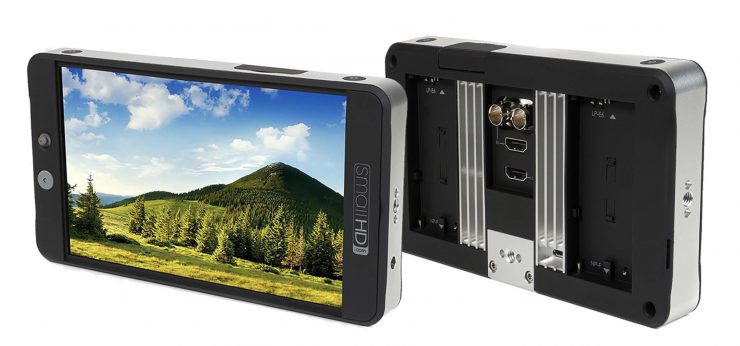
There are many many options out there when it comes to monitors and each brand and model has its own pros and cons. For me, I needed a bright, outdoor viewable screen. I ended up finding a guy selling a second hand SmallHD 702 Bright field monitor which looked to be perfect for what I needed. I had previously rented the same monitor for a job just a month before so I knew what to expect.
The monitor displays a sharp 1920 x 1080 picture, and it has both SDI and HDMI in and out ports which was a bonus for me. Having these ports would alow me to also use the monitor as an on-camera screen from time to time. The monitor also boasts a very decent 1000nits brightness level.
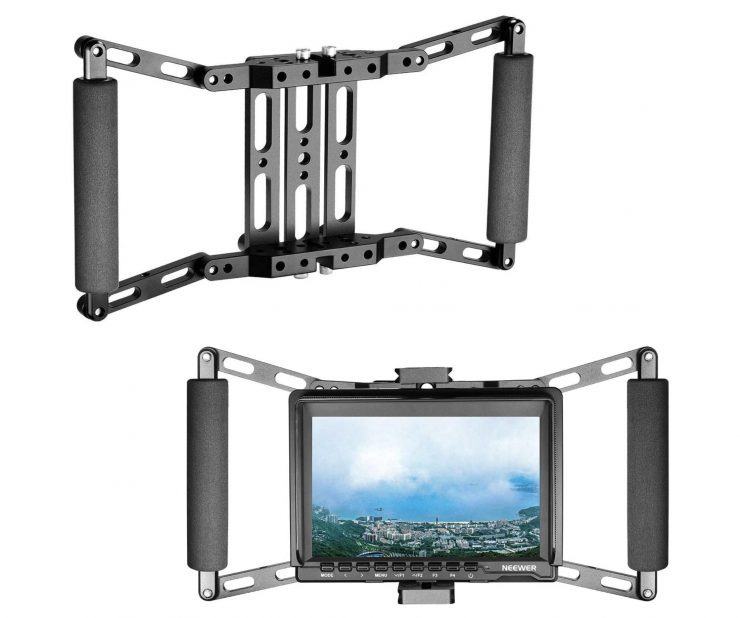
The cage was a fairly easy purchase after I got a recommendation from a friend of mine. The cage he recommended was the super cheap Neewer Directors Monitor Cage, which is a no-frills, basic and fairly modular option. It is a tad on the heavy side but will do fine for my needs.
Batteries & Power
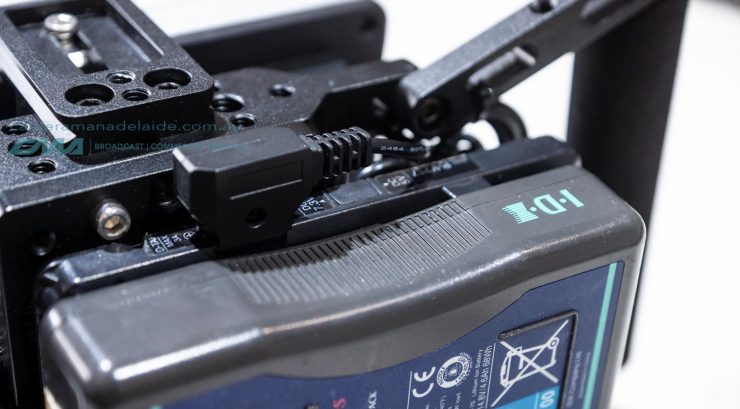
In my existing camera kit, I use 3 types of batteries:
- Sony L series (b-cam Sony FS700)
- Sony BP series (main cam Sony FS7)
- V-lock IDX (Sony FS700, Lupolux lights & light panel)
I was planning on selling my Sony FS700 so initially, I thought I’d make the most of the L series by using them on this wireless directors monitor build. The problem with this is they are large batteries and will stick out the back of the monitor. Potentially this wouldn’t allow enough space to fit the video signal receiver inside the cage. After summing up the pros and cons I decided to go with using a v-lock solution.
A v-lock solution gave me better battery life (I estimated a full days use using only one battery). They are also sturdy and I could attach the battery to the back of the cage and use it as a little stand so the monitor can sit on a table and not fall over.
I ordered a bunch of different cables to connect the unit up which I’ll cover further down in the article, as well as some black cable ties and a set of SmallRig Allen key screws so I can tighten all the connections easily with one tool. It’s also easier to take an Allen key with me when flying with carryon luggage only.
The idea was to put a v-lock battery on the back of the rig, the receiver in the middle and the monitor at the front.
Building the DIY wireless directors video monitor
The Nyrius pro unit I bought second hand arrived in the mail the same day as the monitor, so I opened it up to test it out straight away. I plugged the transmitter into the HDMI out on the FS7 and the receiver into the HDMI in on the SmallHD. I powered up both the Nyrius Tx and Rx using various USB power connections that I had in the office and then turned on the monitor. The trouble was there was ni image, nothing! No image, just a black screen.
What followed was 3 hours of testing every scenario I could think of. I tested 3 different cameras, I tested using an old Nano flash from yesteryear, I changed HDMI cables, changed USB power sources (thinking it could be something to do with Amperage) yet still nothing. Eventually, I called the guy who sold it to me and explained the situation, and luckily, he was a decent person and offered a full refund. So, there I was back to square one! I had no choice but to wait until the Nyrius prime (30ft) range model arrived off Amazon, return that and then purchase a new Pro (100ft) version off Amazon.
3 weeks later…
When the ‘pro’ version arrived, I had all the DIY wireless directors monitor parts I needed, so it was time to start the build.
I had a slim v-lock backing plate that I wasn’t really using anymore that was still connected to an old Westside AV FS700 rig I bought around 8 years ago. I decided to cut off the end and screw this onto the back of the cage which after a bit of messing around with the screws, ended up fitting quite well. The v-lock backing plate had two power outputs: A 7.3V D-tap output and a 12V – 16.8V D-tap output.
Going back on my goal to power everything on the unit from one battery for as long as possible, I realized I could power the SmallHD monitor with a D-tap to Sony L series dummy battery.
Using this thin dummy battery kept the unit slim and compact whilst freeing up my actual L-series batteries for other equipment.
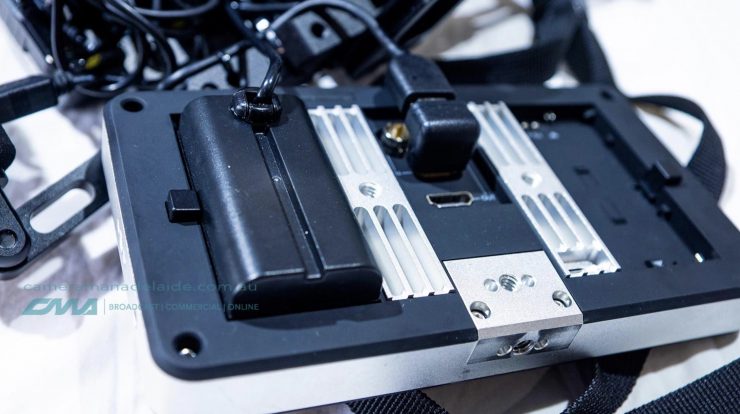
To power the 5V 2A Nyrius receiver I found a D-Tap 2 Pin Male Connector to Two Female USB Power Cord Cable. This has a 1 x 2A source and a 1 x 1A source. Having this spare USB port onboard while out on location has been great, as kt allows me to charge my phone or the backup power bank I use to power the transmitter.
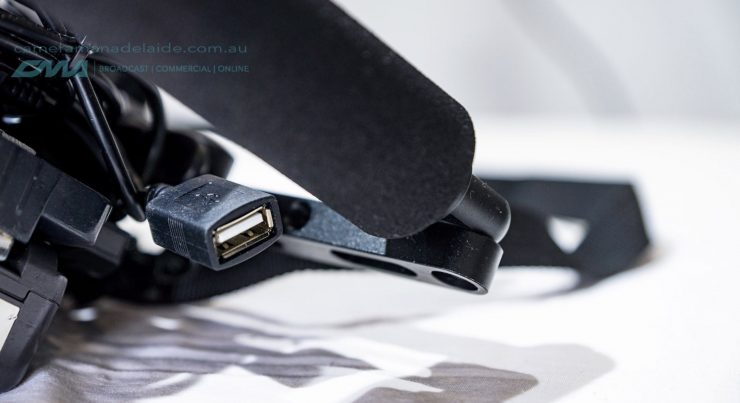
On location, this spare USB port will definitely come in handy!
The D-tap connector luckily fitted perfectly into the V-lock plate with less than a 1mm space between the plastic D-tap connector and the back of the cage itself.
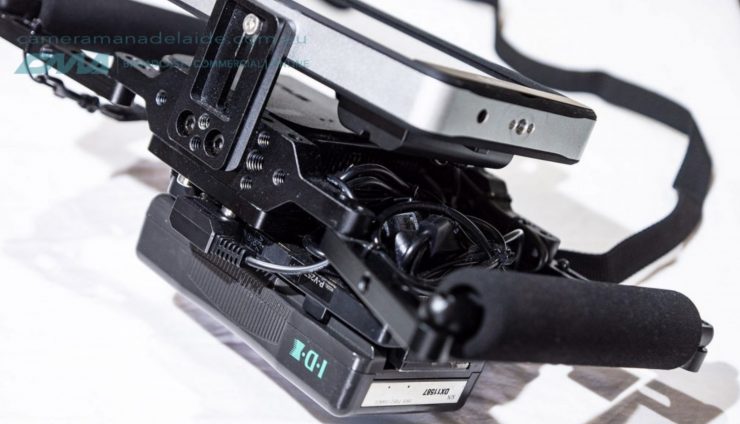
In the center of the image, you can see how tight it was between the D-tap connector and the screw at the back of the cage.
Fitting the receiver & cable management
This was a challenge! I tried a number of ways to do this but eventually settled on using one Allen screw that I fitted onto the middle of the back of the cage on the inside. I screwed it in halfway and then ‘snap hooked’ it into the base of the Nyrius. This seemed to half hold it in place. I then fed a few cable ties through the ventilation gaps at the base of the receiver and fixed them to the cage. This worked great and the unit is now held tight to the cage.
A few things to note:
- I had to completely open up the cage by removing a lot of screws to give me space to fit the receiver into the back and have enough room to rotate it to tighten the screw. I then re-screwed the cage back together.
- I positioned the receiver so that the part with the signal antenna on the inside has the most ‘breathing space’ away from the cage to increase signal strength (see image below)
- At the bottom of the image you can see the 90-degree elbow adapter coming out of the HDMI out of the receiver, wrapping around the outside of the cage (which was unavoidable) and then feeding into the HDMI in on the monitor.
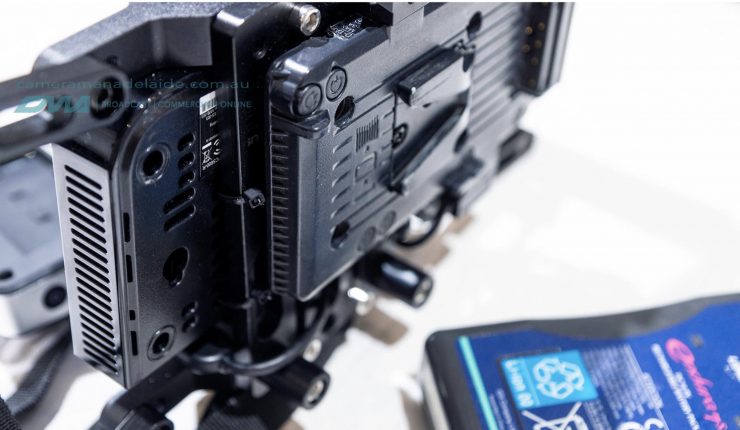
The cable management was pretty simple, hide as much as I can inside the cage and cable tie them up so they aren’t loose and won’t get snagged on anything. The length of the USB cable coming from the D-tap to the receiver and spare 1A female USB is a little longer than what I need but it was the shortest I could find.
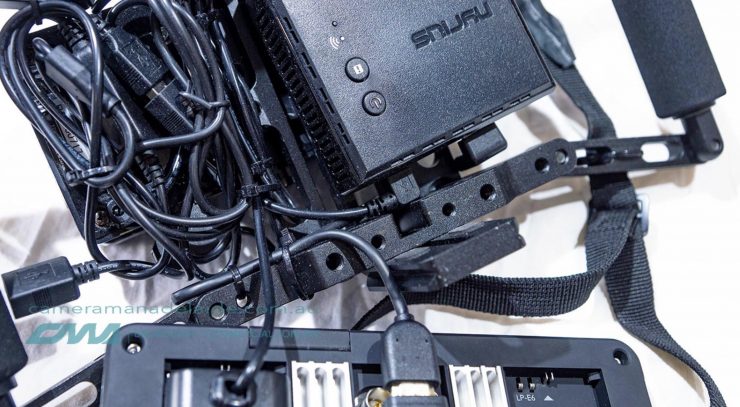
Having the receiver sit flush with the back of the cage means there is space to press the on/off button even when the monitor is attached. It also meant there was about 3cm of space between the back of the monitor and the receiver which reduces overheating and increases signal strength.
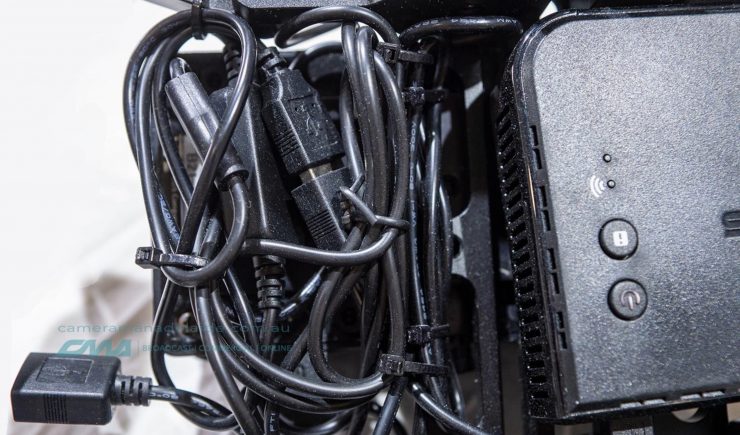
The USB connector in the middle of the screen is the D-tap to 2A female powering the male USB to Nyrius receiver.
Transmitter set up
Setting up the transmitter was a lot easier and fairly simple. I had an old Rycote cold shoe extender in the cupboard doing very little, so I put it to use. To rig this up to a camera operator set up all I need is a spare cold shoe, and it takes 30 seconds to attach. I am powering the unit via a 1x 5,000mAh power bank which lasts about 4-5 hours of shooting. I have a much smaller backup battery that I’ve had to use occasionally in the afternoon on a full day shoot.
The little package is held together via a very amateur set of colorful elastic bands. I will find a more aesthetically pleasing solution in the next few weeks!
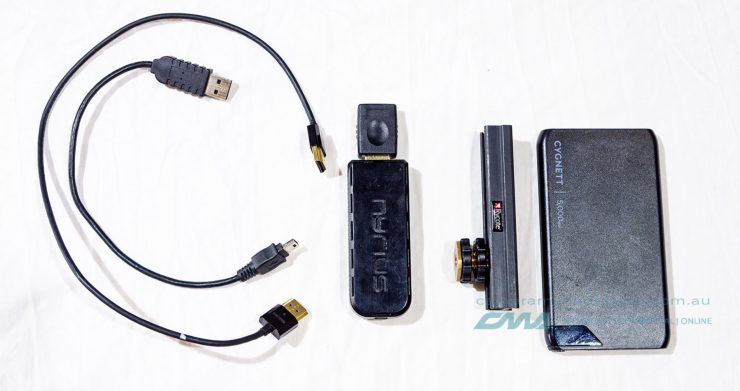
One USB cable from the battery to the transmitter and then a HDMI cable for the feed out of the camera into the transmitter and that’s pretty much it!
Real-world use experience
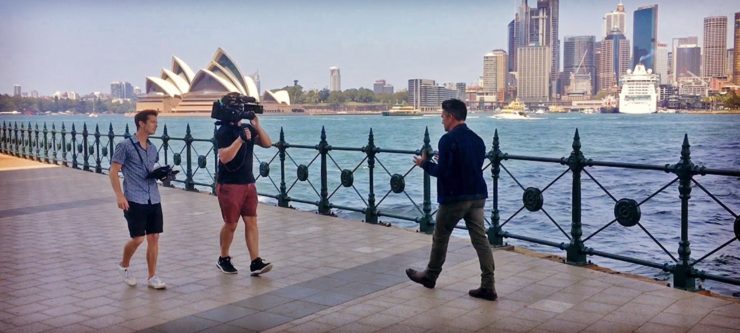
Pros:
Overall I’m pretty happy with how this has worked out. It’s been amazing on set for a producer/director to get a live feed from the camera and collaborate in real-time about what visual look we are going for.
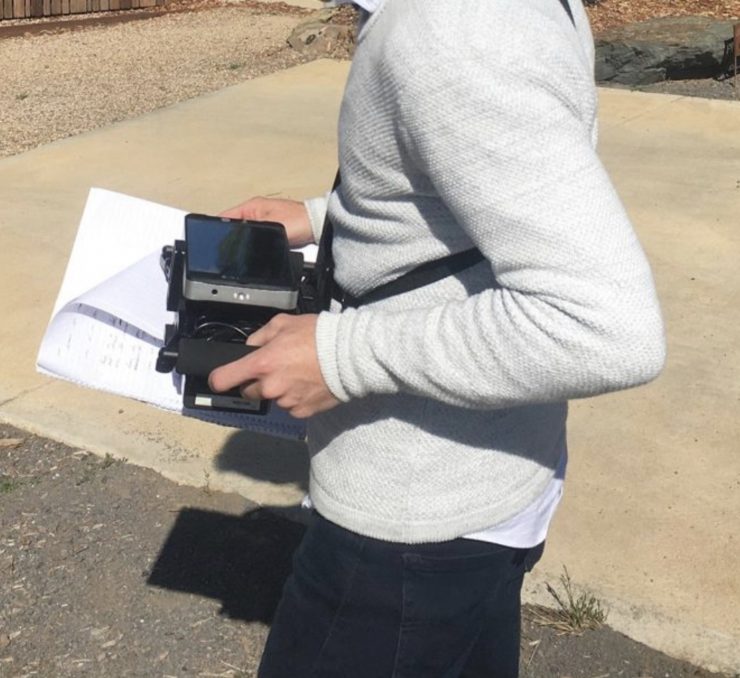
I have been working outside during the Australian summer and have been able to see the screen without too much trouble, it’s very bright! The V-lock battery solution has been a good gamble. 2 weeks ago we flew to Perth, Western Australia for a 4-day shoot and I only had to take two V-lock batteries. One battery powers the monitor and receiver for around 5-6 hours. I also charged my phone during lunch one day via the spare USB output.
It’s worth noting that I have also been receiving an audio signal through the 3.5mm output on the smallHD 702 monitor.
The unit itself is quite portable. I travel a lot on planes to locations and I’ve actually just been removing the battery and monitor to fit the DIY system into a carry on bag.
The delay in video display is very minimal and am really impressed with this. The delay is maybe 2-3 frames at the most and this does not distract me in any way when conducting interviews / pieces to camera, etc.
Cons
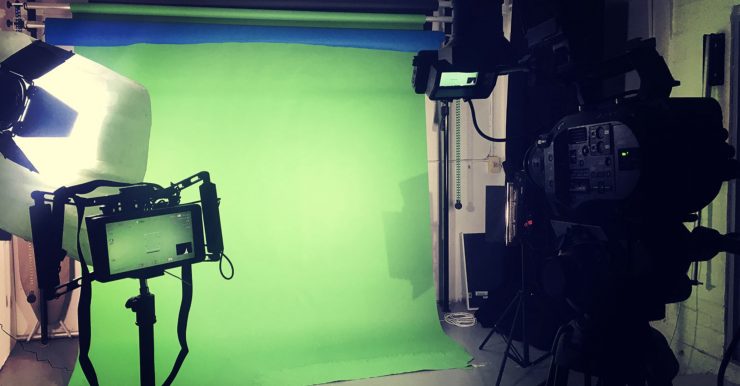
The signal! The signal can drop out occasionally even when i’m only 5m away from the camera. This has not been a deal-breaker though and usually the signal comes back on if I step closer. There have been times when I’m 10-15m away and it’s been fine.
It’s also a tad heavy, so I found an old DSLR camera strap from my A77 in the cupboard which I attached to the rig with cable ties. I wear the unit now over one shoulder like a satchel and it’s really comfortable for long periods of time.
The screw holding in the monitor can become loose after a days filming. I need to work out a better solution here.
Future upgrade ideas
How far do I want to go with this? I know there is an antenna hack I could look into to try and extend the signal of the video transmission. To be honest, for my needs, I haven’t needed to be further than a few meters away from the camera operator or director. But this could be a nice upgrade in the future.
I could also look into a Bluetooth audio option using the USB power port. For now though I am very happy with this solution.
How much did all of this cost?
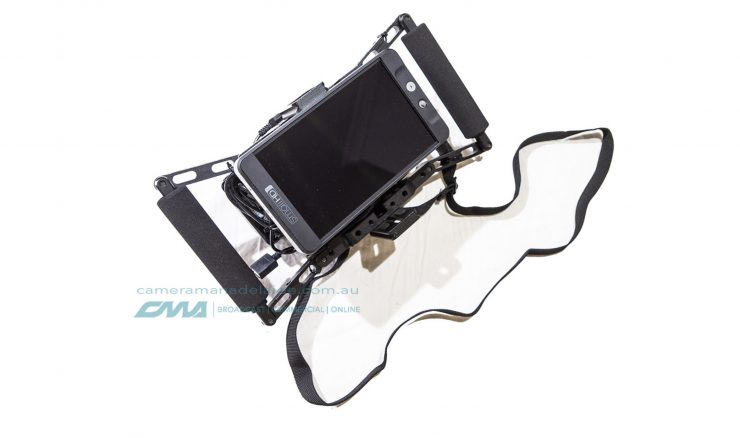
Using as much of my existing equipment as possible in creating this DIY system has definitely reduced the cost, especially since I din’ have to buy batteries or a V-lock battery plate.
All up including the SmallHD 702 bright monitor, the Nyrius transmitter and receiver, the cage, and various cables, the total came in a $1424 AUD.
A large part of this cost is made up of the monitor, but I7m ok with that, because I can use it for multiple different applications. You could significantly bring the budget cost down for this build by replacing the smallHD with a Liliput or an Atomos Shinobi monitor. For example, the cost with a Liliput monitor would lower the DIY solution down to the $850 AUD mark.
Parts list
Monitor & Parts
Transmitter & Receiver
Cables / Various
- Neewer 7″ directors monitor cage
- 90 degree HDMI male-male cable
- SmallRIG hex screws 12pc
- D-tap to 2 pin female USB
- HDMI cable
Like what we do and want to support Newsshooter? Consider becoming a Patreon supporter and help us to continue being the best source of news and reviews for professional tools for the independent filmmaker.





